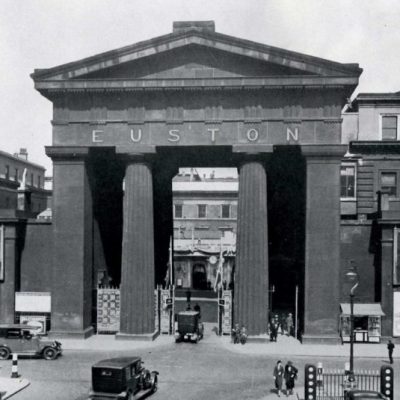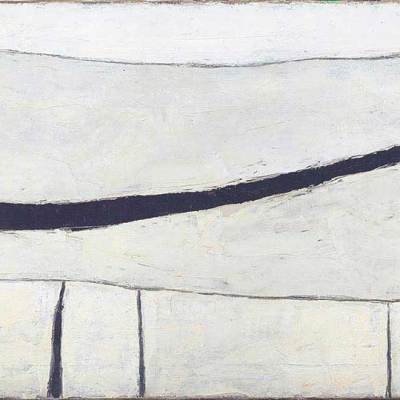The first room of ‘Facing the Modern: The Portrait in Vienna 1900’ is dimly lit and sombre. Severe-looking portraits in dominating frames surround Beethoven’s death mask, and you know you are in for a solemn experience.
Klimt’s miniature Young Girl Seated (1894) hangs delicate and haunting in the far corner. The wonder of its size is emphasised by its proximity to larger, more awkwardly proportioned works, such as Friedrich von Amerling’s captivating study for an official portrait of Emperor Franz I of Austria (1832), whose excessively large forehead and downcast lips seem almost cartoonish.
The range of skill displayed in the first room, dedicated to the ‘Old Viennese’, shows the already rich foundations of Viennese portraiture in the 19th century and prepares you for what should be a truly one-off exhibition. The second room is an awkward jump. Themed around ‘The Family and the Child’, different styles and movements are this time mixed together like an awkward, crowded family reunion.
The combined intensity of Schiele’s The Family (Self Portrait) (1918) – in which he sits with a woman who is not his wife and a child not his own – and Richard Gerstl’s troubling post-Impressionist portrait of The Fey Sisters (1905), which hangs opposite, is very demanding. These paintings, along with Schiele’s dominating Portrait of Erich Lederer (1912) and Romako’s ghostly The Artist’s Nieces, Elizabeth and Maja (1873) feel like they are competing with each other in a space too small. It’s intoxicating, challenging, and moving – but also exhausting and confusing.
The third room is reserved for the self-portrait (Schiele’s Self Portrait with Raised Bare Shoulder (1912) is the masterpiece here although Carl Moll’s Self Portrait In His Study from 1906 is also intriguing) before the focus shifts to the sitters. In a period of huge cultural and economic reform, portraiture emerged among the middle classes as a way of confirming one’s status; but the commissioned portraits of ‘the New Viennese’ also reveal their insecurities. Six portraits bursting with tragedy and internal conflict face each other along a corridor.
Portrait of Isabella Reisser (1884–5), Anton Romako © Leopold Museum Private Foundation, Vienna (LM 2116)

Having Romako’s Portrait of Isabella Reisser (1884–5) smiling through her teeth at Hans Makart’s Clothilde Beer (1878) transports you to the salons of the day. But again the space isn’t generous enough to accommodate the works; a corridor is not the place to view full-length paintings. Klimt’s Hermine Gallia (1904) can be found in the corner, but from no perspective can you see her without glare.
The hall weaves round to reveal – among many other works – Oskar Kokoschka’s Count Verona (1910) and Lotte Franzos (1909), and Klimt’s Portrait of a Lady In Black (1894). Vienna’s masters, who are often under-represented in the UK, take one’s breath away, but it’s overwhelming. By this point I’m ready to leave and there are still two rooms to go.
It would be a shame to see Klimt’s Ria Munk on her Deathbed (1912) (Room 5) for the first time in this state of mind. The themes of death and despair that characterise the end of the show are moving, and clearly an important part of society at the time, but the display seems unfocused. The penultimate section, dedicated to portraits as a declaration of love, achieves a more soothing unification of its themes, and tears you away from the anxiety of the salons.
The room dedicated to ‘unfinished works’ at the close of the exhibition is a fitting way to end this turbulent show. The period thrived on reinvention and these abandoned paintings demonstrate the pitfalls of a time fraught with uncertainty. I have seen masterpieces to haunt me for a lifetime, but I was frustrated by what feels like a wasted opportunity on the part of the gallery. ‘Facing the Modern’ runs until January: best to go with enough time to see it more than once.
‘Facing the Modern: The Portrait in Vienna 1900’ is at the National Gallery, London until 12 January 2014.




